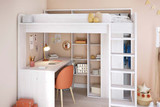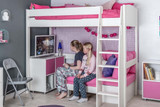The Power of Playdough
Modelling clay or playdough is a fantastically creative substance for kids to play with even though it might just look as if they’re making a total mess! However, while this fabulous mess is being made the kids are encountering valuable learning opportunities that are so beneficial in their development. 
Playdough is malleable meaning that the kids can squidge it about, developing strength in their little hand muscles, vital for fine motor control. Clay can be squashed and flattened, rolled and squeezed, chopped, cut, poked and prodded – all these actions are helping to develop hand eye coordination in young children. Poking stuff into it, making impressions or moulding it into shapes needs concentration, and clay is a fun way to develop that concentration.
It may all look like a mess to you, but this is your child’s ‘work’ – playing is the work that kids do to learn how to be people – the sort of creative, discovery type play offered by clay and playdough is an invaluable part of your child’s learning experience. Help your child get the most out of this sort of play with the following tips.
1. Make home-made playdough with your little one – the process of making the dough is a whole learning experience in itself and is great fun for parents too. There are loads of home-made playdough recipes online (using really cheap ingredients), some of which add scented lotions or oils which adds to the amusement.
2. Playdough play is probably best done in the kitchen where it’s easier to clean the floors. Invest in a few cheap plastic tablecloths to cover furniture, tables, floor etc and then you don’t have to worry about mess. Now you can let your child’s imagination run wild without having to nag about playdough on the floor.
3. Make sure you have a collection of tools and containers to use with the clay (home- made playdough can be kept in the fridge between use). Sorting and matching play leads to ordering and counting – this is learning happening naturally and without effort.
4. Provide a load of added extras to use with the clay, natural objects with a variety of colours, shapes and textures that can be pressed into the playdough.
5. Put together a playdough ‘toolkit’ for these sessions that you can add to as you find stuff:
· Rolling pins and cutters – knives, scissors, pizza wheel, biscuit cutters
· Pasta shapes, shells, sand, feathers, buttons, googly eyes
· Match sticks, lolly sticks, pine cones, bark, leaves, seeds, grasses
· Tins, cake cases, egg boxes, chocolate cases, small containers
· Fabric, netting, lace, ribbons
Recent Posts
-
Unlocking the Potential of High Sleeper Beds for Teenagers
As teenagers go through all the ups and downs of being a teen, their likes and dislikes change a lot
-
Choosing Between a High Sleeper Bed vs. Mid Sleeper Bed
As your little one grows, so do their needs, and finding the perfect kids’ bed for them becomes








